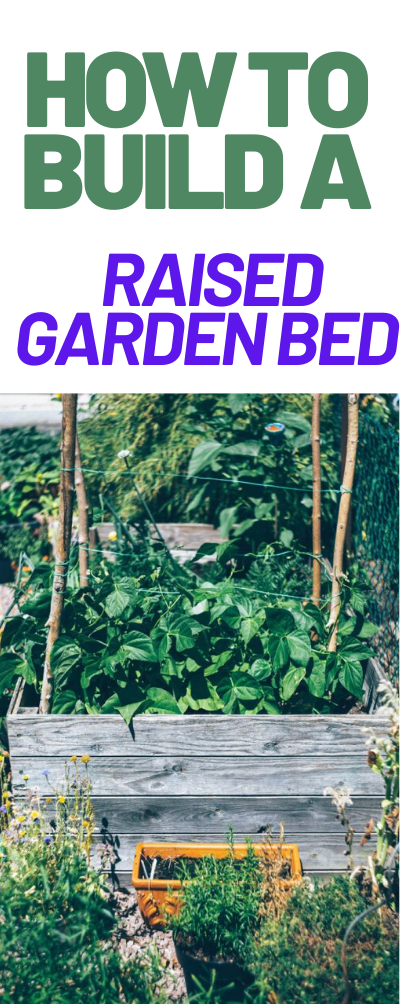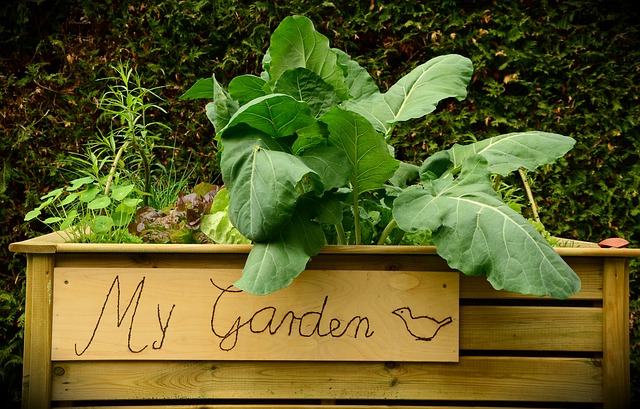This post contains affiliate links, which means I will make a commission at no extra cost to you should you click through and make a purchase. As an Amazon Associate I earn from qualifying purchases.
Building a raised bed in the garden allows a garden to overcome several problems. Raised beds may help address poor soil and damp spots. A Cheap DIY Raised Garden Bed can be a great way for the beginner gardener to get started too!

There are many reasons a gardener may wish to create a raised bed, the construction is often a relatively simple one, however, if a neat and tidy effect is to be created proper planning and a little thought is required.
How to Build Cheap DIY Raised Garden Bed
Reasons for Constructing a Raised Bed
The creation of a raised bed has the potential to deal with many possible gardening problems. At the one end of the spectrum, the raised bed is simply an alternative to the standard ground level bed or border, with the addition of an extra aesthetic feature. At the opposite end of the spectrum, the raised bed may be seen as the ultimate expression in container gardening, allowing the gardener to control the soil type or avoid the effects of waterlogging in a damp area of the garden.
Raised beds may also take the form of an alternative raised structure, such as a table-based garden or even a planted roof. The former of these structures is of particular value for features such as a kitchen garden. Such features also make gardening more of an accessible hobby for those with limited mobility or other conditions preventing one from bending down to tend a bed or border.
Constructing a Raised Bed
Regardless of the kind of raised bed to be constructed, a number of prerequisites will ensure a clean and tidy finish, regardless of style or the construction materials to be used.
Leveling
Before the construction of a raised begins, the site should be leveled, this will ensure that an even affect is created with the materials used to raise the bed. Done carefully, a site may be leveled simply with a spade, taking away a layer, or soil until a level effect is created. Alternatively, one may choose to add a layer of sand and use a wooden beam to create a smooth and level surface.
The materials in a raised bed
There are many styles and forms which a raised bed may take. At the simplest end of the scale, one can buy a commercially produced raised bed kit. Raised bed kits are relatively simple to construct and usually made of wood in one form or another.
A more attractive option is to use old railway sleepers, here one can buy actual disused railway sleepers from a reclamation yard. Alternatively, one may purchase modern timber from a garden center, fashioned in the style of a railway sleeper. If opting for a raised bed made of such wood, it is recommended that the wood be treated before use with some form of wood preservative.
Finally, there is the option of using brickwork or masonry of some form. This is the most labor-intensive of all the forms of a raised bed. A masonry raised bed may, however, represent the most impressive form and is undoubtedly the most durable of all raised beds.

Soil or growing medium
Once constructed, the raised bed will need to be filled with suitable soil. A raised bed is often used to allow a gardener to grow plants that require a soil, which is not naturally present in the garden as such gardeners in an alkaline clay area may often fill a raised bed with an ericaceous soil for acid-loving plants.
Alternatively, a gardener on sandy free-draining soil may opt for something a little more substantial and nutrient-rich, in order to grow roses. In any case, the raised border should be filled to within a couple of inches of the top and allowed to settle. One may consider leaving the bed for a few days before planting. This will allow the soil to settle, thus preventing the disturbing of roots later on.
